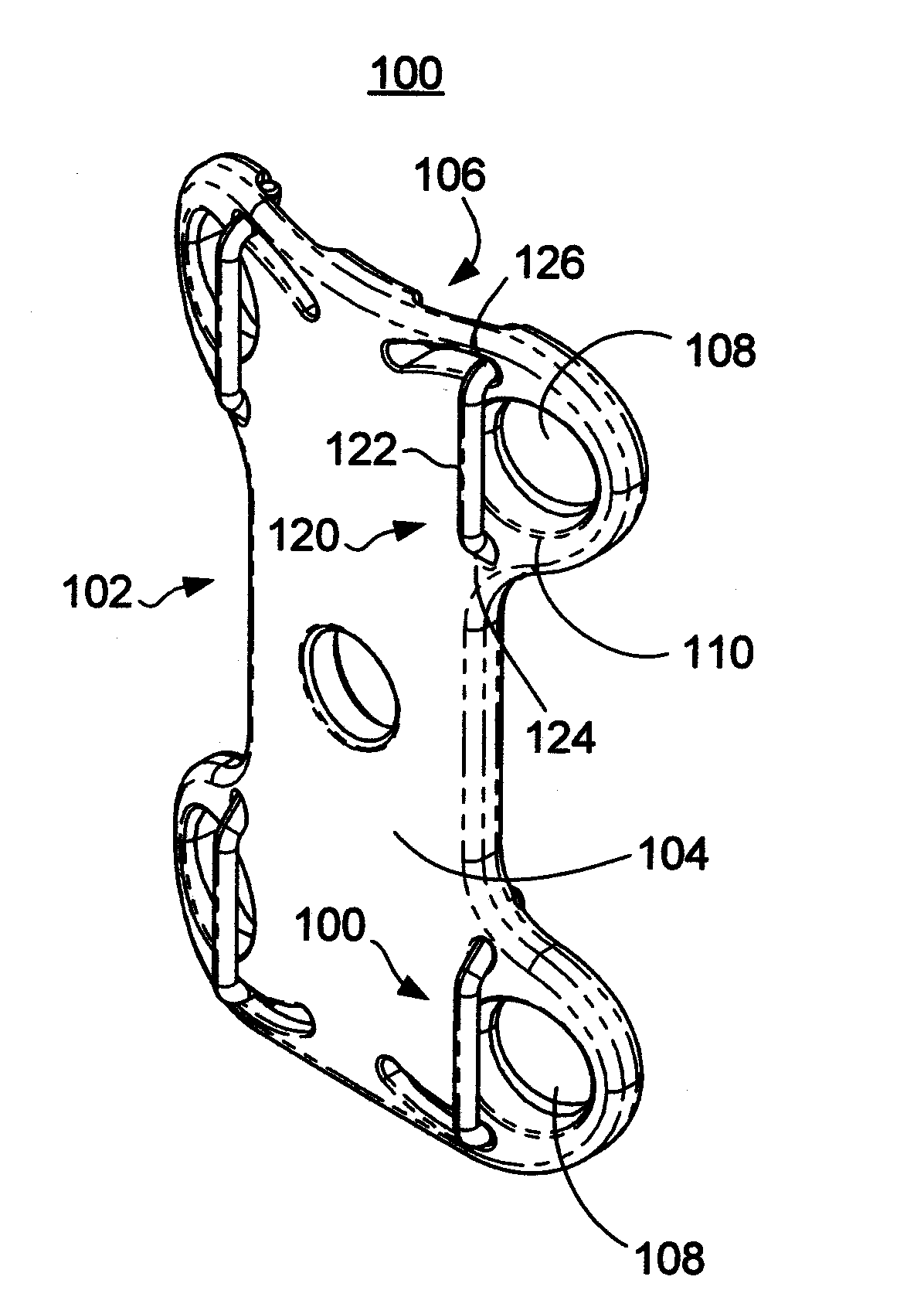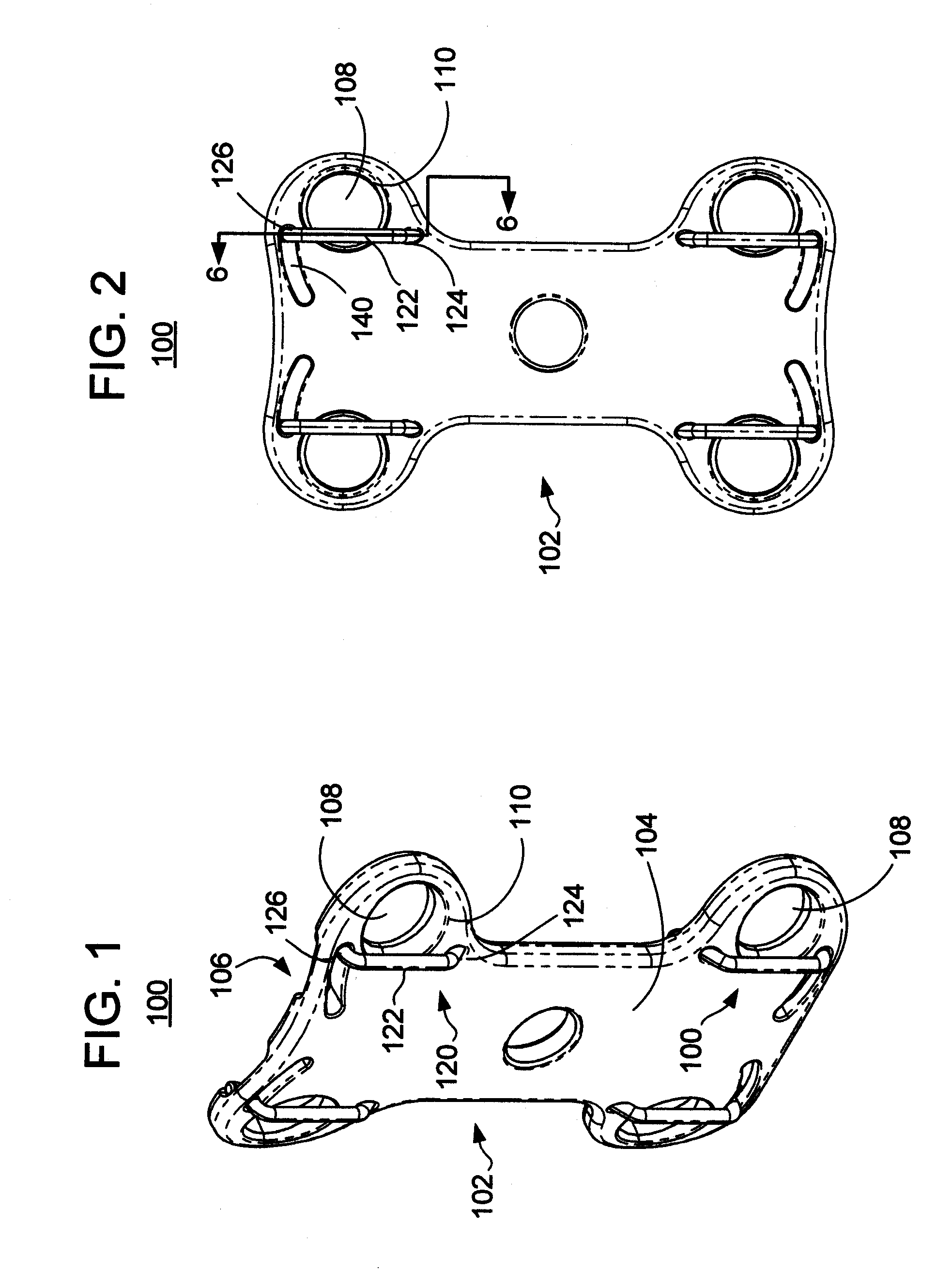Methods and apparatus for providing a retainer for a bone stabilization device
a bone stabilization device and retainer technology, applied in the field of screw retainer for bone plate, can solve the problems of compromising the quality of life of a person, the most common and often debilitating conditions affecting millions of people, and back pain
- Summary
- Abstract
- Description
- Claims
- Application Information
AI Technical Summary
Benefits of technology
Problems solved by technology
Method used
Image
Examples
Embodiment Construction
[0029]It is noted that various aspects of the present invention may be employed in any application in which a screw (or other attachment device) is used to fasten a structure to an anatomical body. For the purposes of discussion, and not by way of limitation, various aspects of the present invention will be presented in connection with a number of embodiments directed to a specific application in which spinal stabilization (e.g., fusion) is desired.
[0030]In this regard, reference is now made to the drawings, wherein like numerals indicate like elements. There is shown in FIGS. 1-6 a skeletal fixation apparatus in accordance with one or more embodiments of the present invention. The skeletal fixation apparatus in this embodiment is implemented as a bone plate 100 that is suitable for use in fusing adjacent vertebrae in a spine. It is understood that the bone plate 100 may be employed at any level of the spine (cervical, thoracic, lumbar) by suitable adjustment in the various dimensio...
PUM
 Login to View More
Login to View More Abstract
Description
Claims
Application Information
 Login to View More
Login to View More - R&D
- Intellectual Property
- Life Sciences
- Materials
- Tech Scout
- Unparalleled Data Quality
- Higher Quality Content
- 60% Fewer Hallucinations
Browse by: Latest US Patents, China's latest patents, Technical Efficacy Thesaurus, Application Domain, Technology Topic, Popular Technical Reports.
© 2025 PatSnap. All rights reserved.Legal|Privacy policy|Modern Slavery Act Transparency Statement|Sitemap|About US| Contact US: help@patsnap.com



